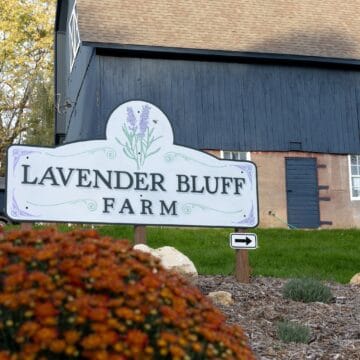
November 2, 2023
MANITOWOC – The New Markets Tax Credit (NMTC) program focuses on community development and economic growth through the use of tax credits for low-income and rural communities.
The Wisconsin Aluminum Foundry (WAF), which is nestled in downtown Manitowoc, recently received a combined $22 million NMTC investment from Cinnaire – a nonprofit community development financial organization – and Impact Seven – a community development financial institution (CDFI).
“Every year, the government sets aside (money) for this, and they allocate the funds to different community development entities across the country,” Sachin Shivaram, CEO of WAF, said. “Those fund entities then look for projects to invest in, to achieve that aim of investmenting in low-income communities where you can help people get jobs or housing – different things like that.”
Shivaram said when he saw WAF was in an area to qualify for funding, he knew he had to apply.
“Our CFO, Josh Gay, took the reins on (the application),” he said. “It’s a complicated structure – lots of strings attached, lots of paperwork… We had to think of the project first, and then have the proposal of what we’re going to do, what kind of jobs we’ll create, how many jobs, what is the end market – map out the whole investment.”
WAF received $11 million from Cinnaire and $11 million from Impact Seven – funding that Shivaram said will go toward a new 50,000-square-foot foundry and a 12,000-square-foot renovated office space in Manitowoc.
New foundry, more jobs
One of the main purposes for WAF to expand and build a new foundry, Shivaram said, is to bring in more high-paying jobs.
“Our expansion project in Manitowoc will create about 80 new jobs, and all those jobs are jobs people with no manufacturing experience can do,” he said. “We will train them… they’ll go from earning $15-$16 an hour (somewhere) … to a skilled manufacturing job where they’ll be making $26-$27 an hour.”
Shivaram said an example of an entry-level foundry job is a finishing position – where the employee will take a casting and refine the final piece.
Other jobs, he said, include pouring and general labor.
“These are not different types of jobs than we already have,” he said. “We’ll just be expanding.”
Propelling WAF forward
Foundries, Shivaram said, are a capital-intensive industry where the payback on building something new can take a long time to see.

Sachin Shivaram, CEO of Wisconsin Aluminum Foundry, said the new foundry will create an additional 80 high-paying, entry-level jobs. Submitted Photo
“We built a new production line three years ago, and it took us two years to get it to work properly, so we weren’t even making a return on the investment for two years,” he said. “It (took) three years before we saw any sort of financial return, and then paying back the whole investment is going to take 10 years.”
Shivaram said many businesses cannot make that kind of investment, especially with compounding interest – therefore, many people do not end up investing.
“If you go to most foundries, you’ll see equipment is old, it’s patched together – sometimes literally with duct tape, if not figuratively with duct tape,” he said.
WAF, Shivaram said, is already about 10 times the size of its average competitor, and building another foundry will put even more distance between them.
Wisconsin being the most foundry-intensive state in the country also helps, he said.
“It is a rare thing to build a brand new foundry – and a big one – (it) generally doesn’t happen,” he said. “If anything, you incrementally add on a little bit. What it’s going to mean for us, is… we’re exponentially increasing our competitive advantage in the marketplace.”
A new foundry and new machinery means WAF is better equipped for the future of manufacturing – whatever that may look like.
“The equipment we’re putting in is targeted toward some of the new markets in the industrial sector,” he said. “Electric vehicles and power transmission are things we’re seeing a lot more of now with the advent of the Inflation Reduction Act, and a general desire to improve clean technology in America.”
Benefiting the community, region
The addition of a new foundry benefits WAF, but Shivaram said it also benefits the surrounding area, specifically with the creation of more high-paying jobs.
“With high-quality jobs, people will be able to spend that money they earn on housing, on buying stuff in the local economy,” he said. “This is what the Wisconsin Economic Development Corporation (WEDC) does as well – help businesses create good jobs, and then the benefits spread to everybody.”
WAF, Shivaram said, is aiming for the same thing.
“We’re going to have a lot more people move into downtown Manitowoc,” he said. “All sorts of things happen when people earn a decent wage. If you’re creating jobs (that are) $14 an hour, people can barely get by. That’s detrimental to the local economy… but if you create high-paying jobs where people have savings they can spend, that’s a huge positive for the economy.”
Shivaram said WAF also offers supportive services for its employees, such as translating, which help keep the foundry competitive in today’s job market.
“We’ve partnered with the Literacy Council of Sheboygan, and they come on-site and teach English… (and) we pay for that,” she said.
Not only does teaching English help non-native speakers on the manufacturing floor, Shivaram said, but it also helps employees navigate personal matters as well.
“Helping people with language is a critical kind of service,” he said. “Helping them get bank accounts and housing – all that kind of stuff.”
Shivaram said another benefit WAF provides its employees is childcare assistance.
“We give (all employees) $400 a month to spend on paying for childcare, buying things for the kids, whatever it is,” he said. “We have about 100 parents participating in that program.”

The new foundry is expected to be finished in March of next year, with the office remodel estimated to be finished that October. Submitted Photo
WAF also provides for its employees a “defined benefit pension plan.”
“A lot of people, especially in the low-income sector, don’t have (a benefit pension plan),” Shivaram said. “And that’s an attractive thing for most people.”
The expansion made possible by the funds, he said, also means newer machines, which is in turn safer for employees.
“It makes a nicer place for employees to work in – better ventilation, all the nice stuff,” he said. “Foundries are hard places to work. (They’re) dirty, (they) smell. So, we’re already at a disadvantage. (The funding) is accomplishing a business aim, and then also helping us make it more attractive for employees.”
The importance of NMTCs
WAF is not the first business in Wisconsin to reap the benefits from an NMTC, Shivaram said.
The Landmark building in Wausau also received $11 million from Cinnaire to revitalize the historic building.
The total project cost $25 million.
“This NMTC program is great,” Shivaram said. “It’s probably something (where) if more businesses knew about them, they’d pursue funding through this. It’s a great program for businesses, (and) makes investments so much more feasible.”
The new foundry is expected to be complete in March of next year, with the office remodel estimated to be finished in October 2024.
 Inspiring the next generation of female construction workers
Inspiring the next generation of female construction workers Stop and smell the lavender at Lavender Bluff Farm
Stop and smell the lavender at Lavender Bluff Farm








